Last Updated on: February 4, 2025
It must have been quite exciting the first day you saw blue-colored bird eggs, knowing most avians lay either white or brown eggs.
Interesting, right?
Which species did you think they belonged to? Did you think they belonged to a rare bird or another animal?
Several birds lay blue eggs, and we’ll discuss a few of them here, such as the red-winged blackbird and house finch.
18 Birds That Lay Blue Eggs
Prepare for one of the most exciting birding adventures as different birds lay eggs with dark to pale blue color. Therefore, you’ll discover species in different geographical zones and bird families.
1. House Sparrow

It lays greenish-white or blue eggs that may have gray or brown speckles. Since it’s a backyard visitor, it can build a nest in your building — you don’t have to go far from your residence to marvel at this bird’s light blue eggs! Plus, a house sparrow may use the same nest the following year. You’ll come across a nest made of dry vegetation and lined with papers and feathers.
The incubation and nesting periods are 10 to 14 days.
2. Red-winged Blackbird
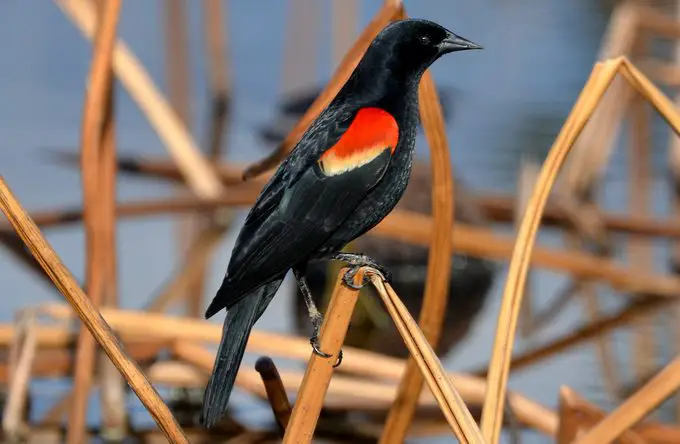
It’s one bird species you see across most of North America. It’s almost similar to a crow, but it has a yellowish-orange shoulder patch. A red-winged blackbird has a clutch of between two and four bluish-green or gray eggs. They’re either brown or blue speckled eggs.
3. Eastern Bluebird
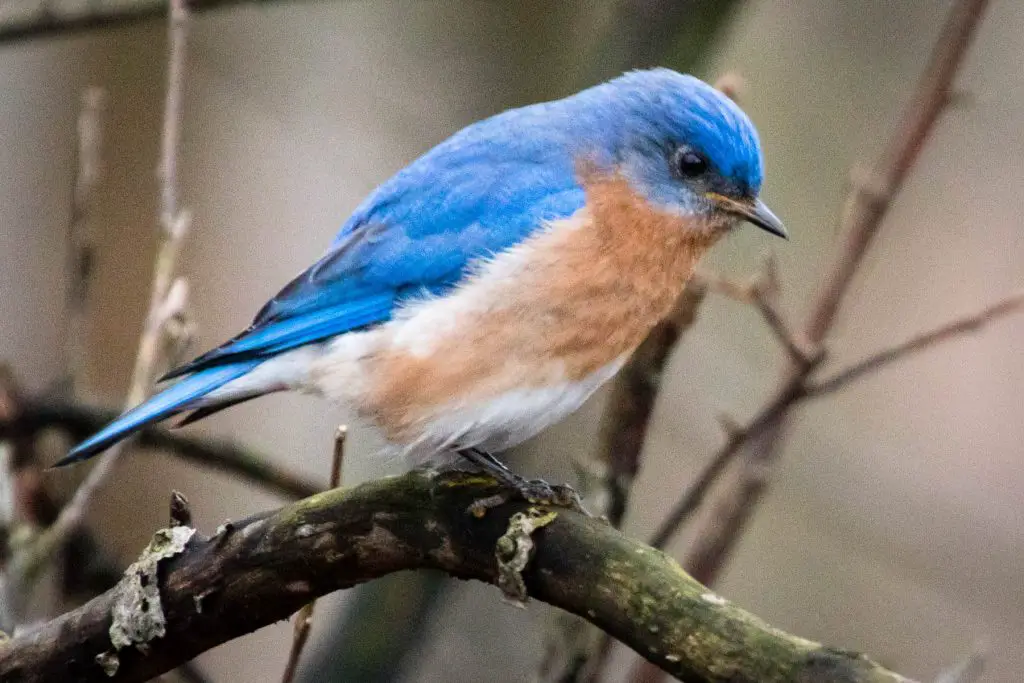
Eastern bluebirds love perching on telephone posts in summer, and we have them on our list of birds laying blue eggs because they lay bluish ones. The female lays about seven blue eggs per clutch, and it doesn’t build a nest if there’s a free nest box in your backyard.
4. Dunnock
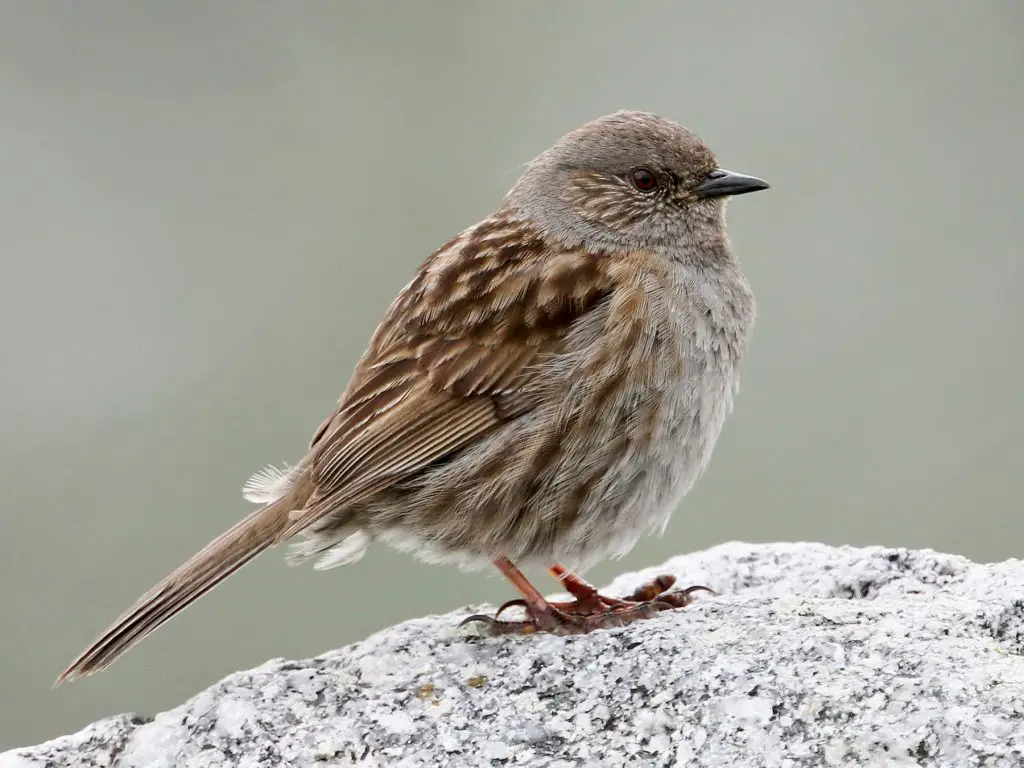
It’s a small brown-gray bird that’s quiet most of the time.
A pair mates for life though the female can breed with other males. Another name for this bird species is a hedge sparrow though it isn’t related to the sparrow species. Its nest consists of twigs, moss, and a soft lining made of wool or feathers. The female dunnock lays about five bright-blue eggs per clutch.
5. Wood Thrush
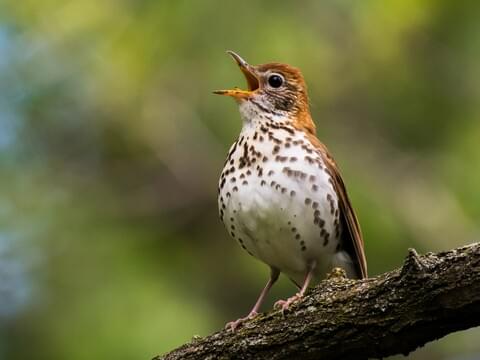
It’s here even though it doesn’t lay blue eggs. Instead, its eggs have some bluish touch on them, as they’re turquoise green with no speckles. A wood thrush lays up to four eggs, and their incubation takes two weeks.
When a male finds a nesting site, he draws the female’s attention by gathering materials and leaving them at the site. It takes the female between three and six days to build the nest, and once it’s ready, she lines it with rootlets before laying eggs.
The nest sits on a low branch in a shrub, with the twigs shielding the eggs from the sun. If the eggs hatch successfully, the pair builds a new nest within 300 feet from the first one. However, if it’s not, the breeding pair moves to a new location.
6. House Finch
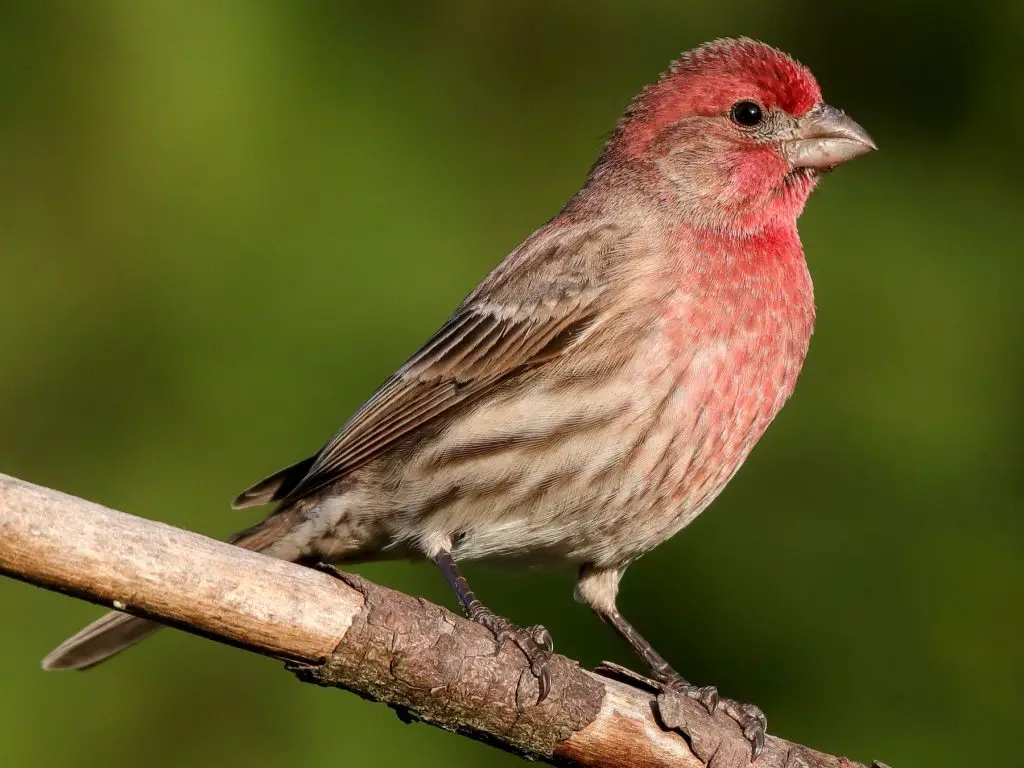
A house finch doesn’t nest in one habitat as you’ll find its nest in a deciduous forest, coniferous forest, rock ledge, or building. A pair may even take over an abandoned nest.
It’s one of the birds that lay blue to green eggs with black or purplish speckles. Further, a house finch lays up to 6 eggs per clutch.
7. Snowy Egret
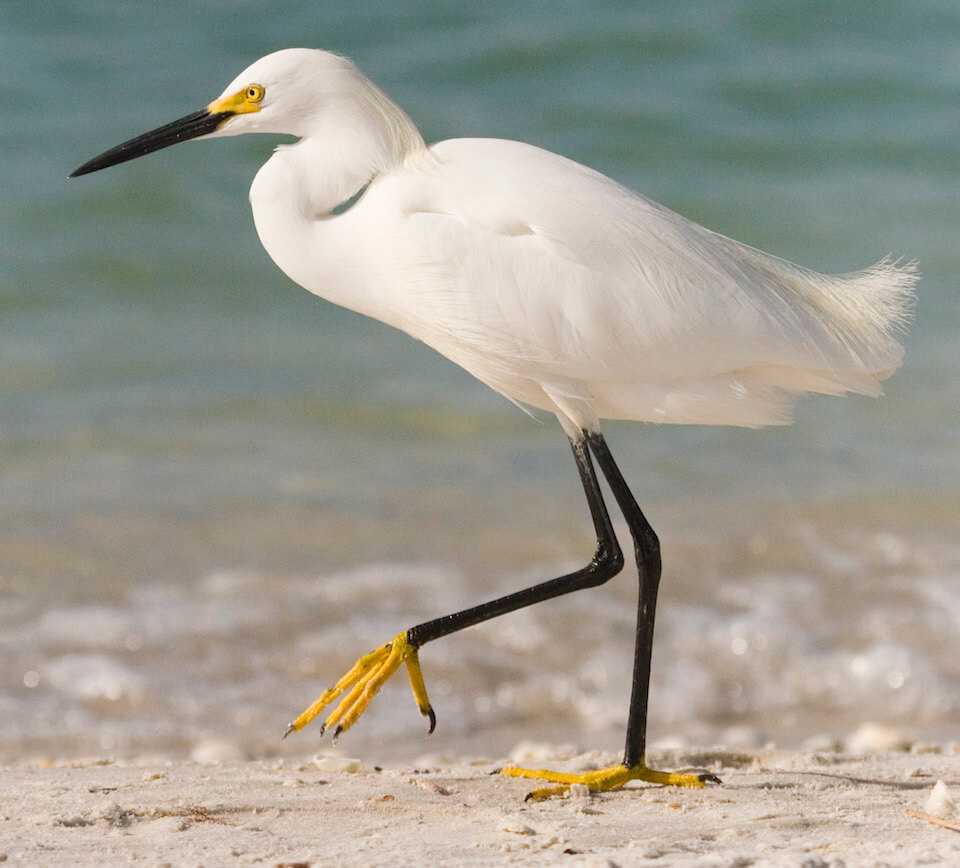
It’s one of the bird species you’ll see in wetlands. You’ll know it by its large bill as it differentiates it from the cattle egret. Also, it walks in the water instead of exploring the fields near the water. Its clutch has up to six greenish-blue eggs.
8. Great Blue Heron
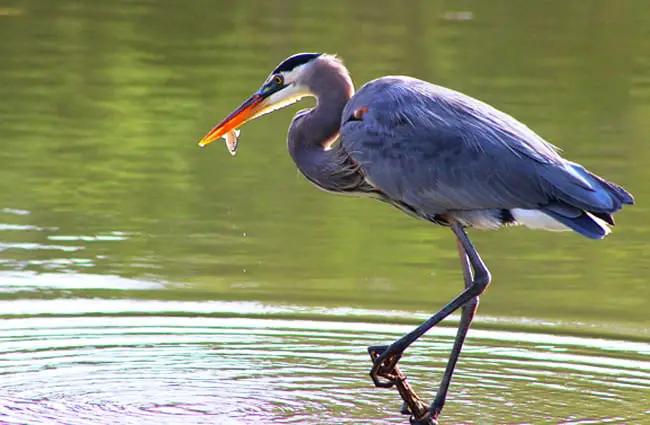
The pale blue eggs of this avian fade when incubating. You’re likely to see its nest in several places, such as bushes and trees. It builds a large nest because it’s a large bird. Each clutch has up to six blue eggs 2 inches wide.
9. Song Thrush
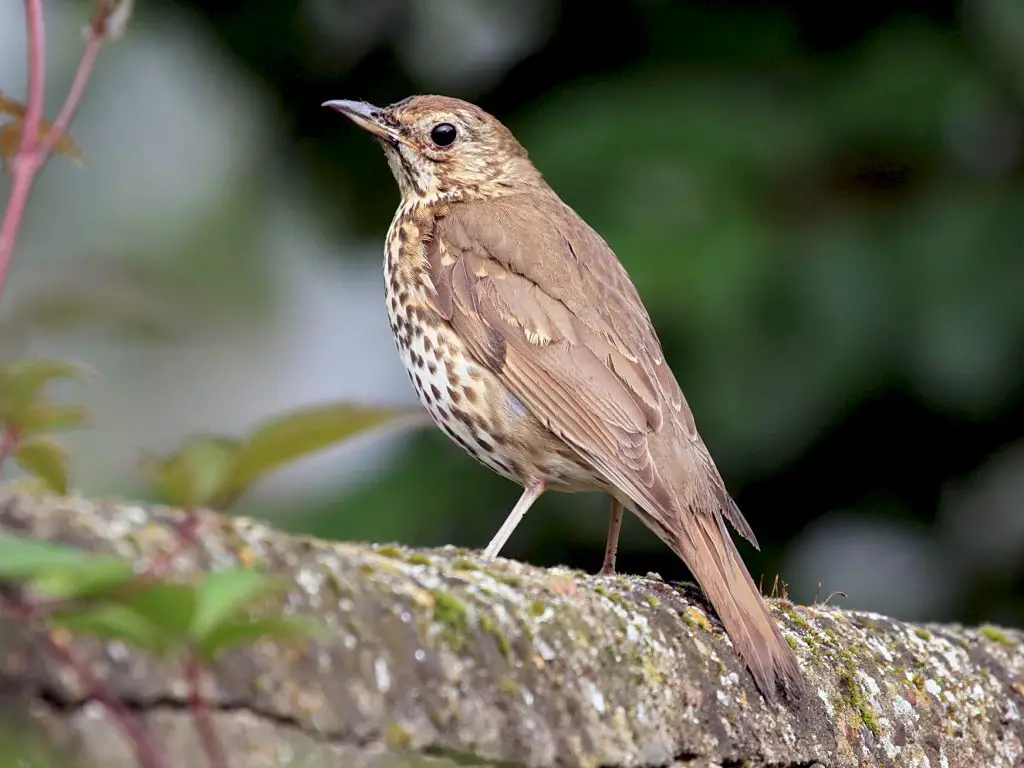
This species is also on the list of birds that lay blue eggs as it lays inch-long light-blue eggs. These glossy eggs have black or purple speckles, and they’re in a clutch of up to five eggs.
10. Mountain Bluebird
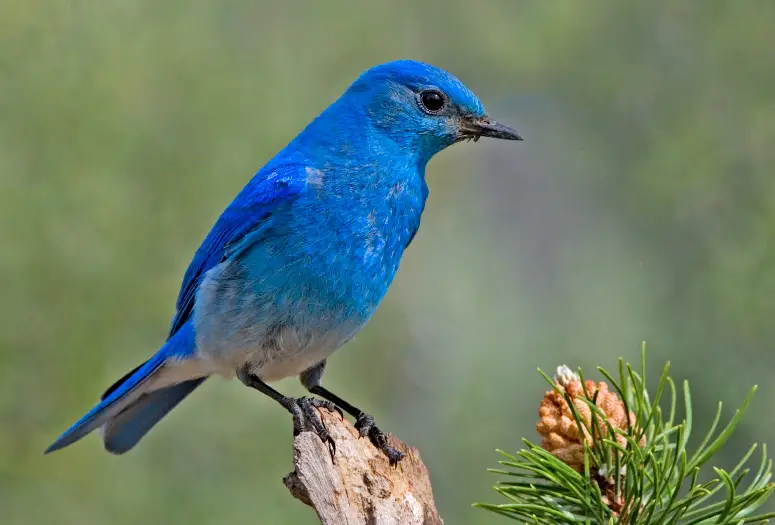
This bird lays blue eggs or ones with bluish-white color. Its clutch has four to eight eggs, and they sit in a nest that’s up to two inches deep. The mountain bluebird reuses the same nest cavity, so the lining materials sometimes pile up inside.
11. European Starling
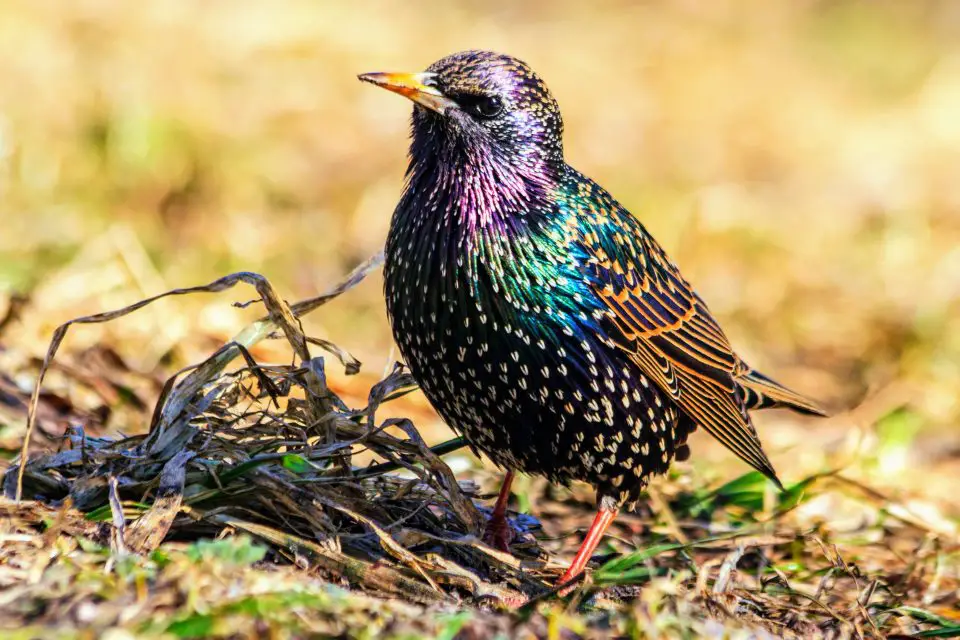
A European starling’s eggs have a bluish to greenish color. It lays three to six blue eggs, and a breeding pair incubates them in turns. Starling eggs are larger than the eggs of other species as they’re one inch long and 0.9 inches wide.
12. Eurasian Blackbird
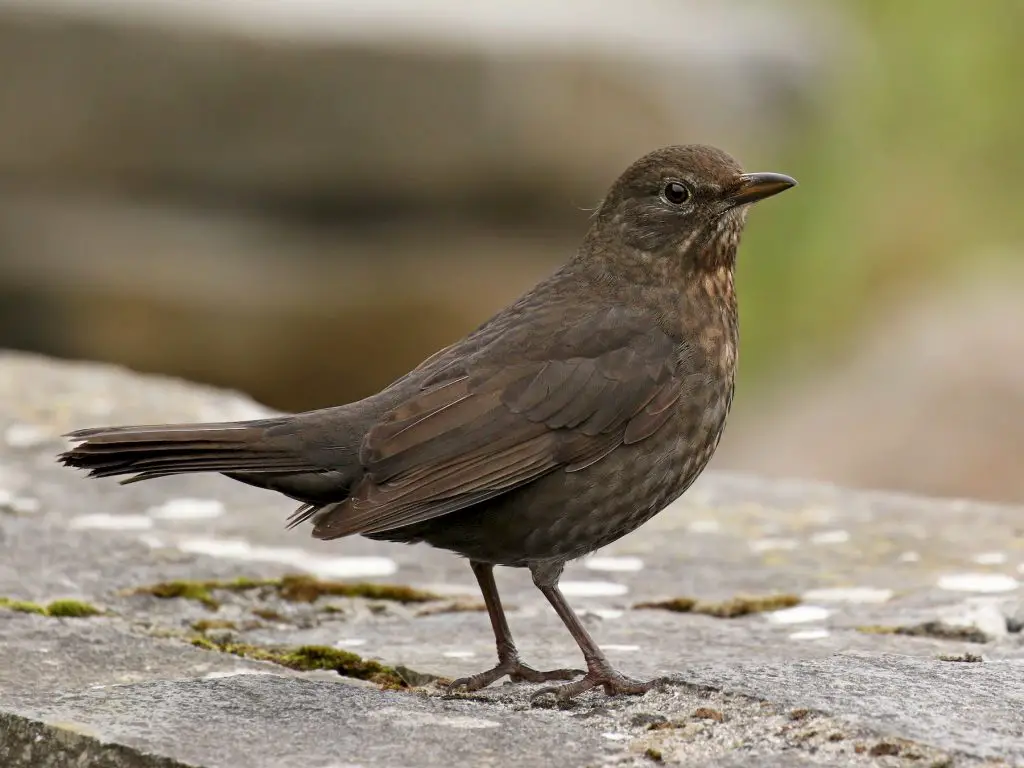
It’s also called the common blackbird, and you’re likely to see it in Europe, Australia, and parts of North Africa. A pair may separate if breeding isn’t successful even though it’s a monogamous species. It lays 3 to 5 eggs of bluish-green color and reddish blotches and incubates them for about 14 days.
It breeds in a concealed spot than most birds but still loses its eggs to predators.
13. American Robin
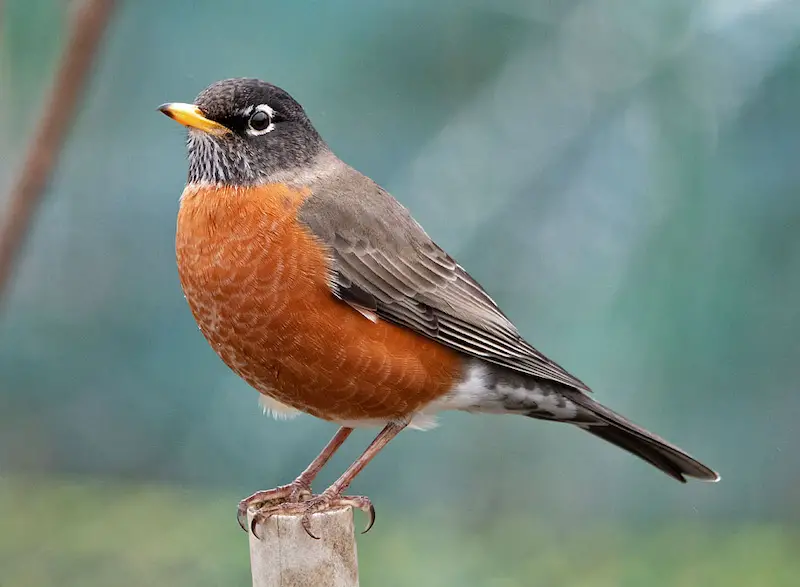
This avian lays bright blue eggs about one inch long, and each clutch has three to five eggs.
The female robin builds a nest using twigs, mud, and dry grass. In most cases, this species nests in the lower part of a tree or even in a treetop. Since the robin also frequents backyards like the house finch, you might find its nest in a gutter or on a light fixture.
14. Gray Catbird

Do you know some bird species can sing for up to ten minutes? That’s the case with the gray catbird. You’ll hear the male singing loudly as it protects its territory. If another bird intrudes, the male’s song changes to a softer tone.
The gray catbird lives in many parts of North America though it migrates to Mexico and Central America in winter.
The female builds a nest in five days using materials like twigs, mud, and grass. If such materials aren’t available, this bird uses trash. Therefore, you’re likely to see it in a residential area. Gray catbirds lay eggs with turquoise-green color and red speckles. A clutch has one to six eggs.
15. Black Tinamous

It’s not in North America as its habitat is in the Andes mountain range. You’ll probably hear it before you see it as it’s very vocal, making a series of whistles and coos like a dove. This bird lays blue eggs, and it’s different from the grey tinamou because it’s darker.
16. Blue Jay
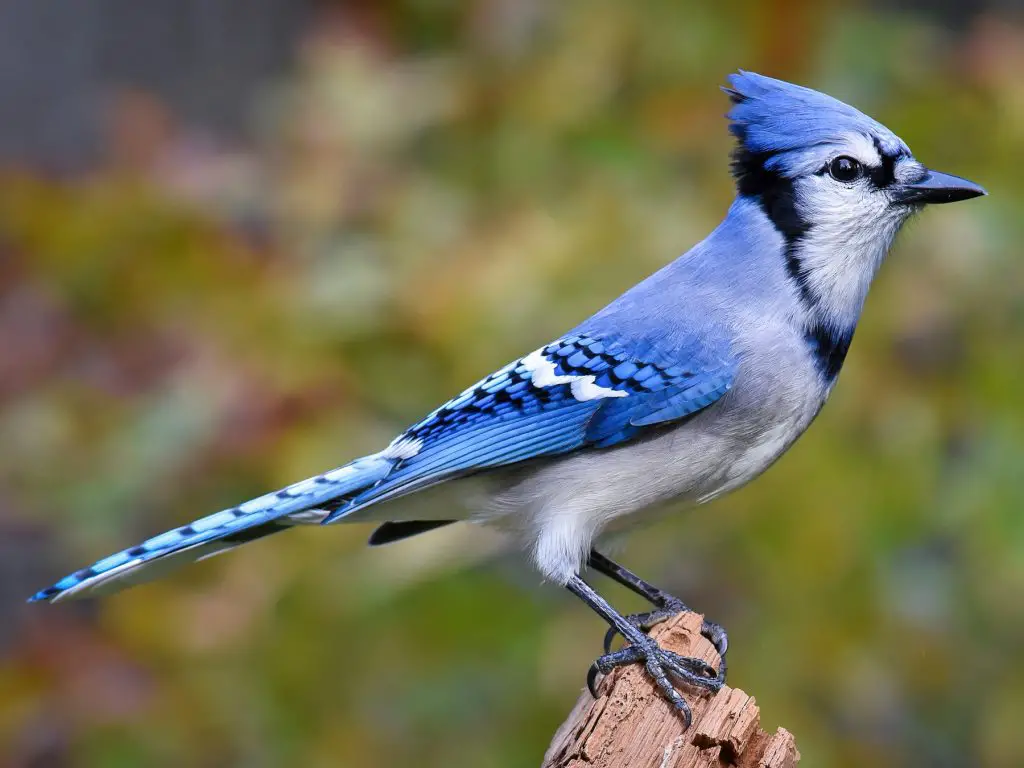
You don’t have to go to a forest to see this one as it loves bird feeders throughout North America. It’s a noisy and intelligent bird that can mimic hawk calls.
The best nesting site for blue jays is the outer branches up to 25 feet from the ground. A breeding pair may abandon a nest when a predator settles nearby despite the hard work of building one. Lastly, blue jays lay blue or light brown eggs with brown speckles.
17. Lesser Goldfinch

A lesser goldfinch lines the nest with feathers and other soft materials before it lays pale blue-white eggs about 0.6 wide.
The female goldfinch selects a site for a nest, especially places with many branches or a cluster of leaves. Such spots are usually up to eight feet off the ground, and it takes about eight days to build a nest. The incubation period is up to 13 days, and it precedes a 14-day nestling period.
18. American Goldfinch
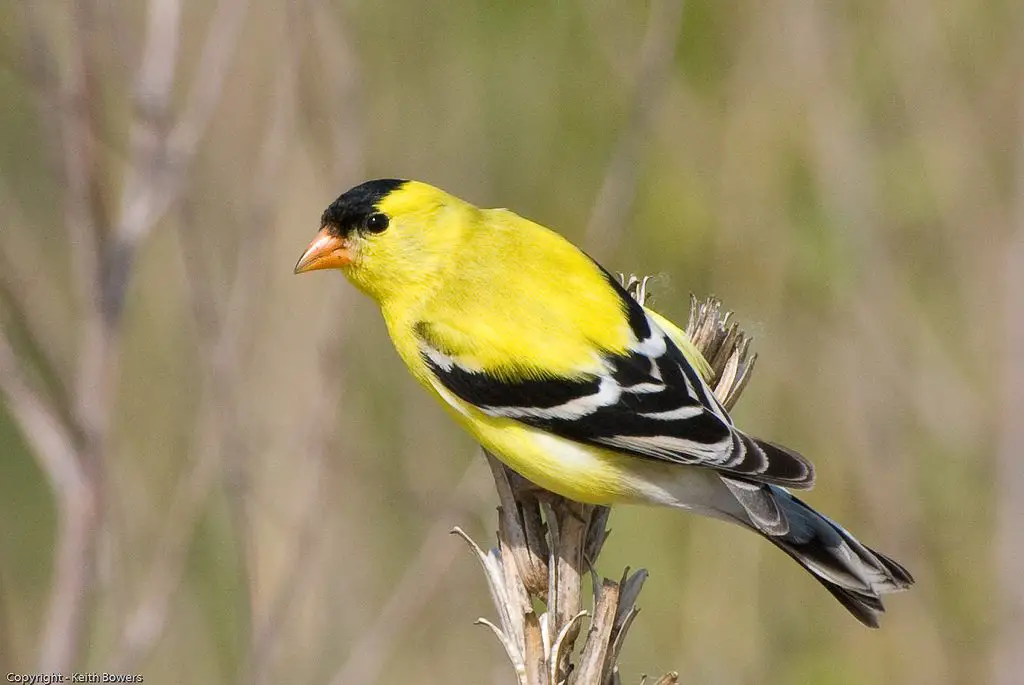
It lays pale blue-white eggs with brownish spots. Each clutch has up to seven eggs.
An American goldfinch builds a nest with the same materials as other birds. It gathers rootlets, plant fiber, and spider silk. The building process takes six days to complete a home of about three inches.
Why Do Bird Eggs Have Different Colors?
Bird eggs’ colors vary almost the same way thousands of birds have different plumage. In short, the avian world is full of color.
On that note, bird eggs have either a greenish or reddish-brown pigment. The color comes from the concentration of any of these two pigments and the shell’s white calcium carbonate. You’ll come across other reasons people give for varying egg colors, and we’ll look at some of them below.
The Region
Birds in colder regions lay darker eggs, while species in places with more solar intensity lay brighter ones.
Hence, to ID bird eggs, know the species likely to live in that habitat. For instance, the eastern bluebird is a resident of the lower eastern states of North America, and its breeding grounds are the northern states.
It also has a wintering range in Texas and New Mexico. Therefore, if you get blue eggs in a nest in California, which is in the western states, you wouldn’t expect them to belong to an eastern bluebird.
Though some claim that greenish-blue eggs block UVB radiation, eggs barely let light through; hence, the shell doesn’t have to be dark. Further, as we’ve mentioned, the eggs in chilly places are darker than in the brighter areas, yet based on the claim to block UVB rays, the eggs should be darker if the egg color has radiation protection.
Protection From Predators
Many birds nesting in cavities have white eggs as they don’t need much protection from predators, while the ones nesting in the open have pigmented eggs. Confirm this phenomenon by comparing bird eggs of species nesting in these two places. Based on the avians we discussed earlier, most birds that lay blue eggs nest on tree branches and trunks.
Parasitism
Some birds know that a female from another species will take care of their eggs when they dump them in the new host’s nest. Thus, ornithologists believe that’s why species with pigmented eggs use color to identify theirs among parasitic eggs. They can then throw out parasitic eggs or abandon the nest altogether if they don’t want to incubate another species.
Roaming Tip: Learn more about this “rare” bird that every birdwatcher is curious about — Blue Cardinal.
Watch This!
Frequently Asked Questions
What common birds have blue eggs?
We have a comprehensive list above, and it includes birds like blue jays, house finches, American robins, European starlings, and American goldfinches. These species inhabit most parts of North America all year round.
Do robins lay blue eggs?
Yes, they do. An American robin lays five eggs of sky blue to blue-green color. It has one to three broods, and it incubates a clutch for half a month, then enters the nestling period for 13 days.
What bird lays a small blue egg?
The house finch lays eggs between 0.6 and 0.8 inches long and 0.5 and 0.6 inches wide. They are small compared to a house sparrow’s eggs, yet the latter is almost the size of a house finch. Eggs laid by a house sparrow are 0.8 to 0.9 inches long and 0.6 inches wide.
Conclusion
So, what birds lay blue eggs?
As we’ve found out, species with blue-colored eggs come from different bird families. On top of that, if you’re planning a birding tour to take pictures of bluish-green or light blue eggs, you’ll tour North America and other continents as species with such eggs are everywhere.
Another exciting fact is that most birds that lay blue eggs are backyard visitors. For instance, American robins, house finches, and European starlings are almost everywhere in North America. Which eggs do you want to see first?

